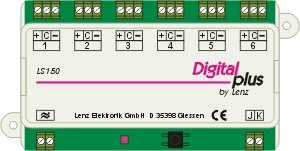Since I am switching over to a DCC System I have been reading and researching the components I want to add to my layout...such as auto reverse looping, and switch machine control. Here is my question;
I have been considering the the purchase of a few Lenz LS150 decoders to control my Atlas Snap type swtich machines, which seems to have the features I want for the price I can afford.
However here is the confusion...
It says this unit needs a seperate AC power supply to operate the switch machines. AC? I thought those were DC operated from my old setup transformer from the accessories terminals. Am I wrong? Is that AC as in 110 AC? Won't that blow out the little components inside those switch machines?
I thought those were DC operated from my old setup transformer from the accessories terminals. Am I wrong? Is that AC as in 110 AC? Won't that blow out the little components inside those switch machines?
I'm sorry to seem so dumb when it comes to this but I want to make sure I purchase the right equipment for my new layout.
Thanks in advance,
I have been considering the the purchase of a few Lenz LS150 decoders to control my Atlas Snap type swtich machines, which seems to have the features I want for the price I can afford.
However here is the confusion...
It says this unit needs a seperate AC power supply to operate the switch machines. AC?
I'm sorry to seem so dumb when it comes to this but I want to make sure I purchase the right equipment for my new layout.
Thanks in advance,


